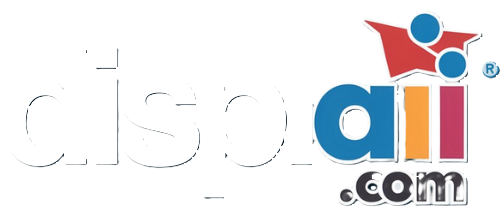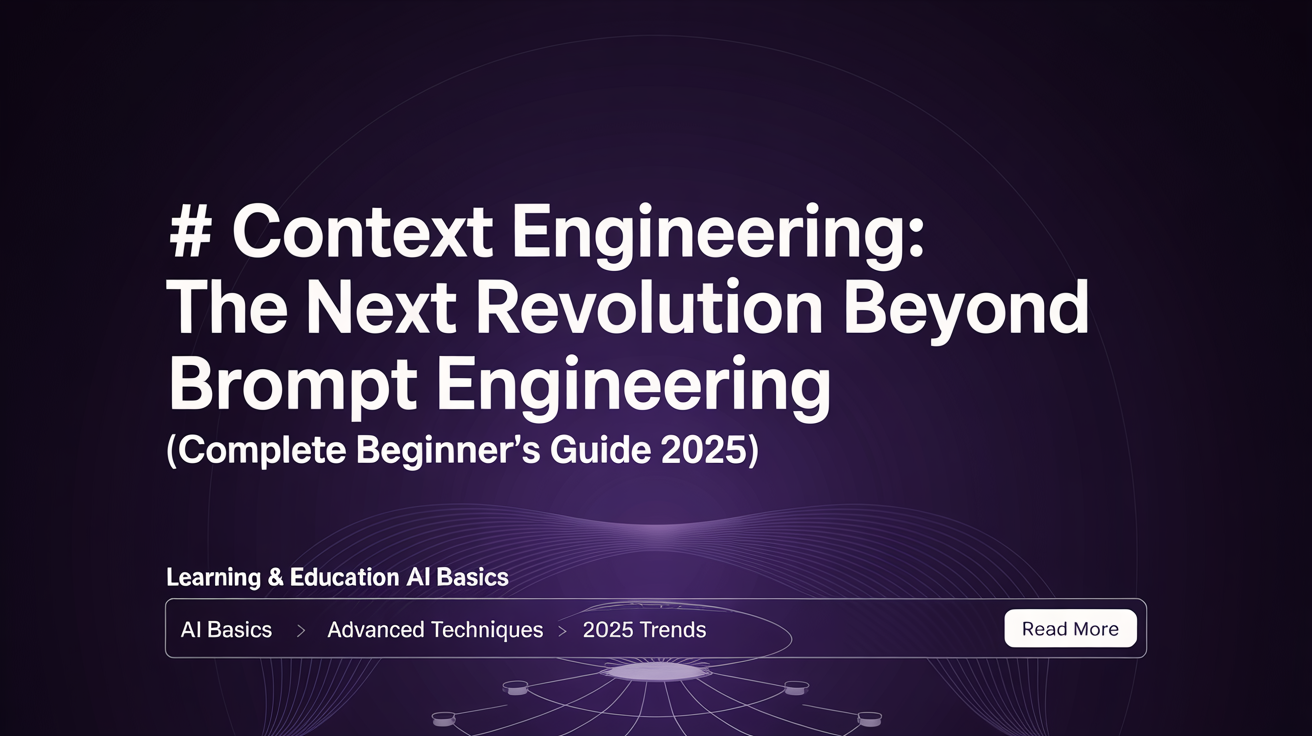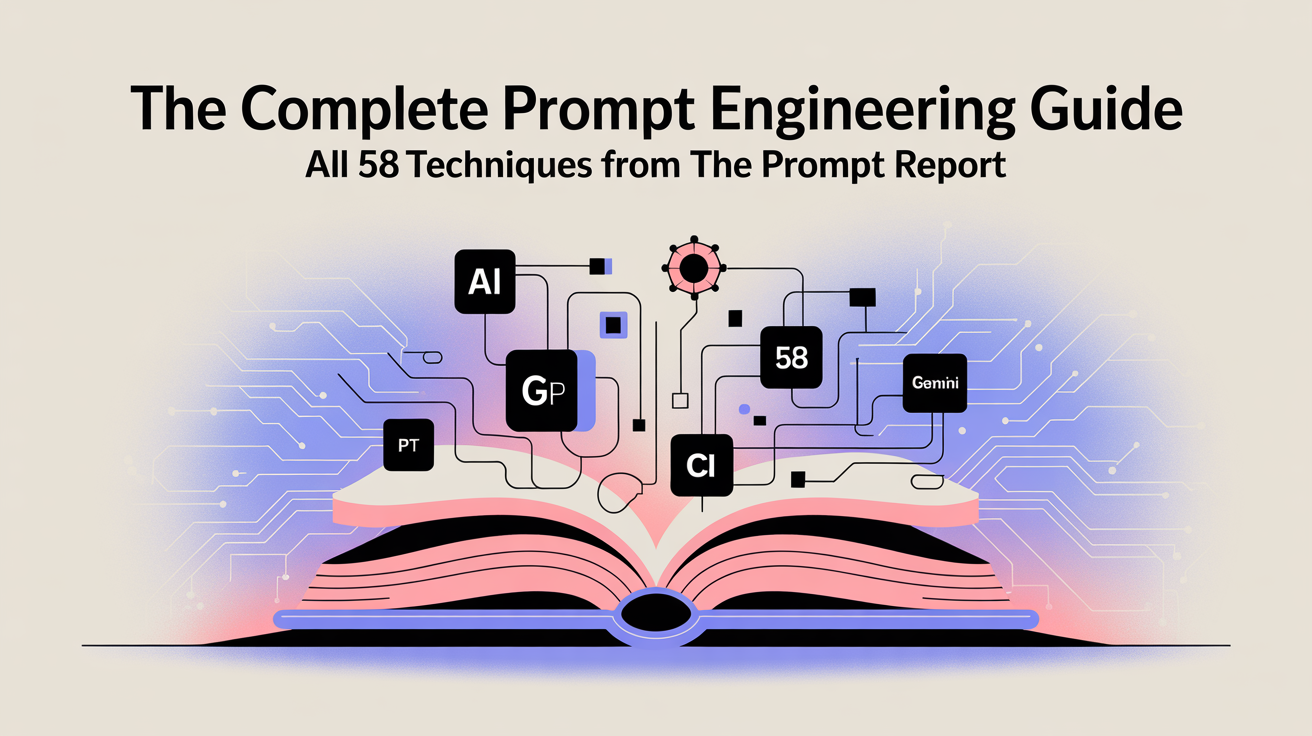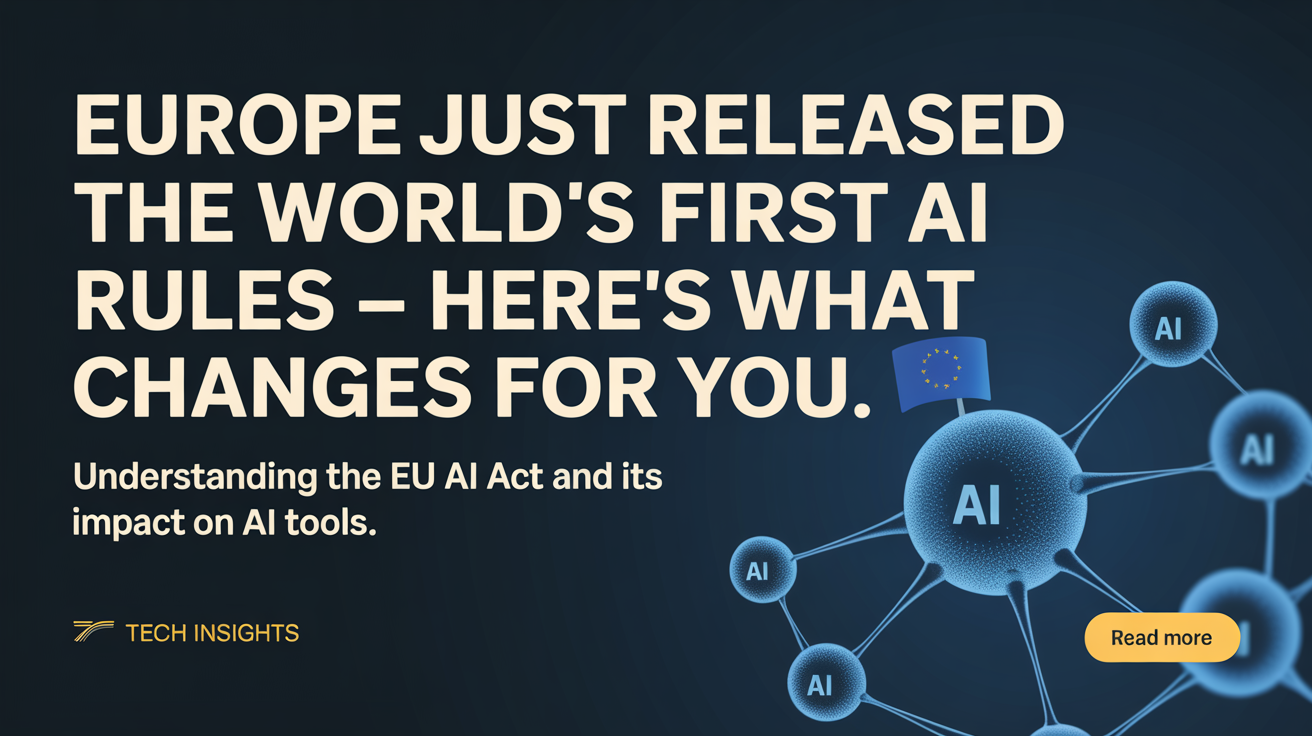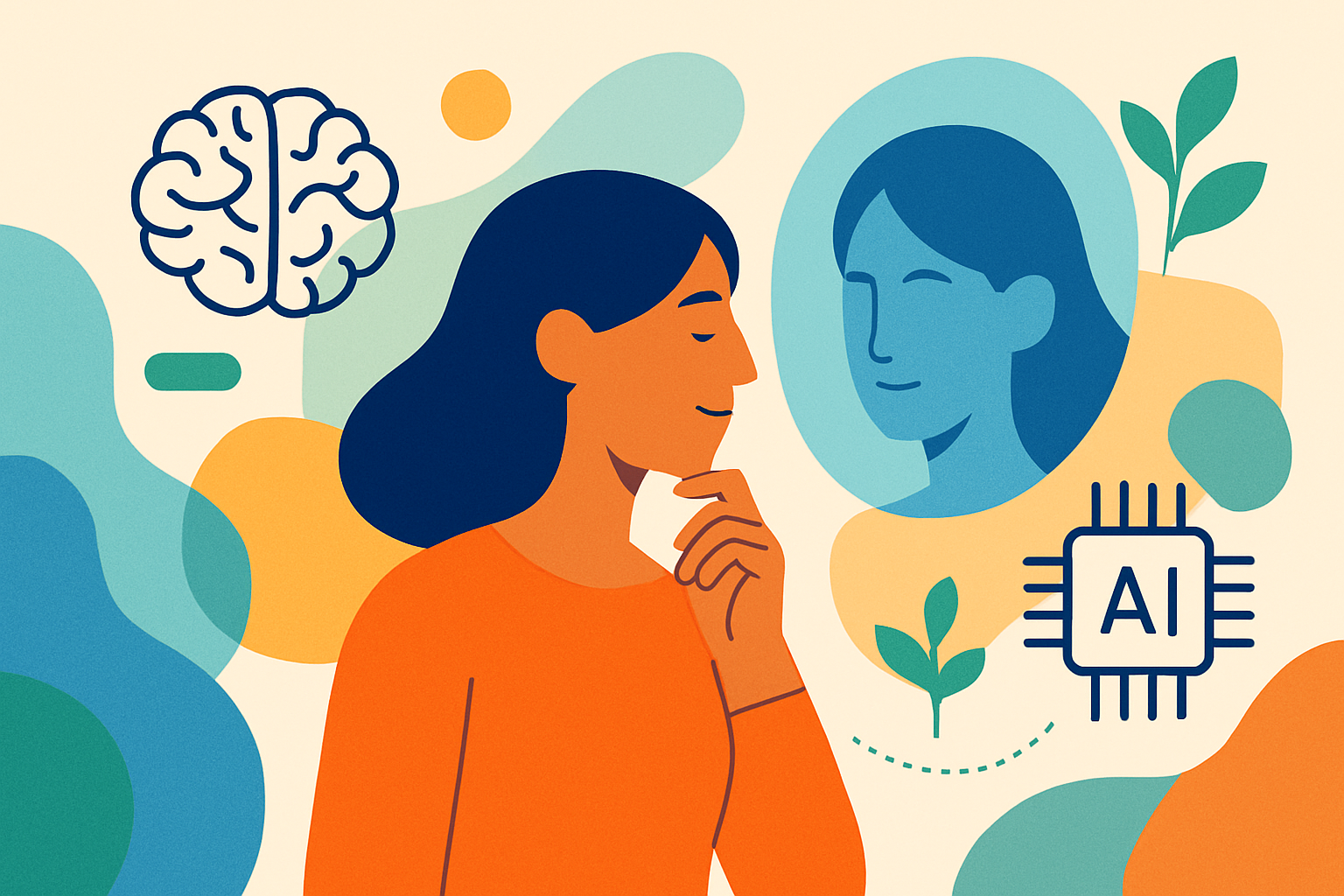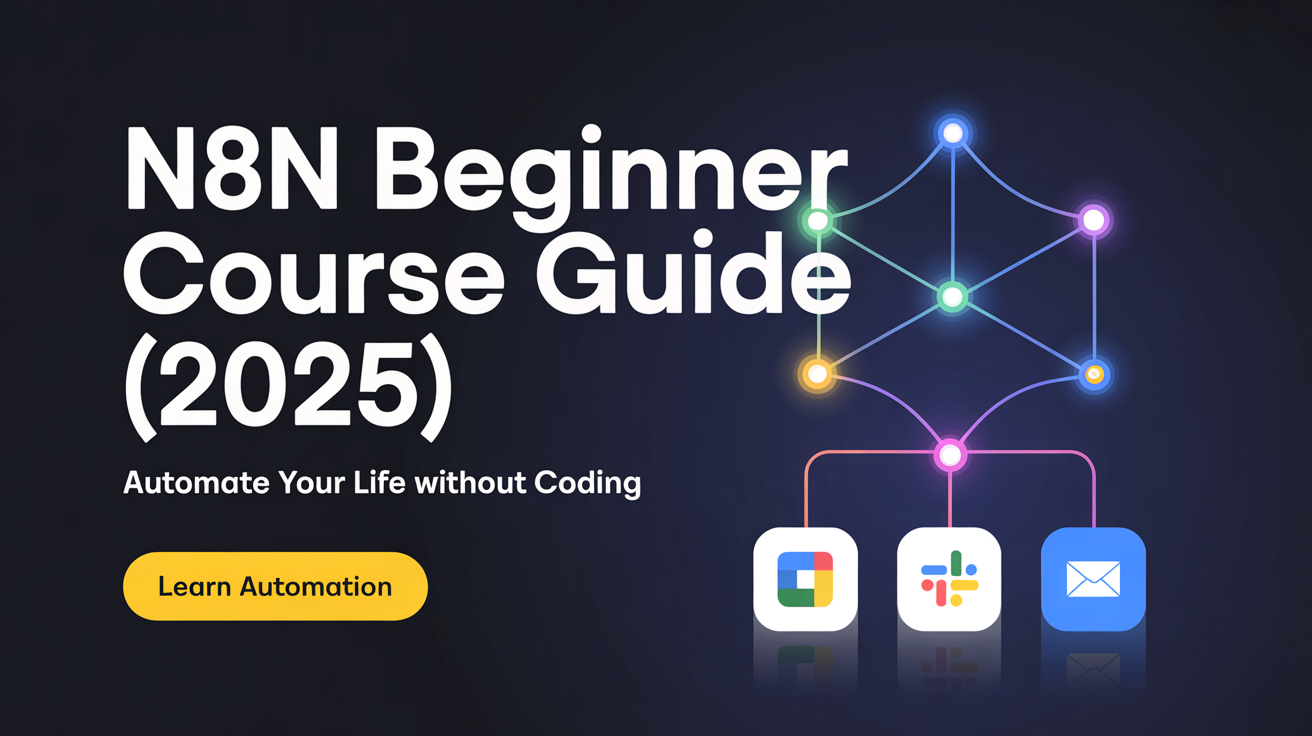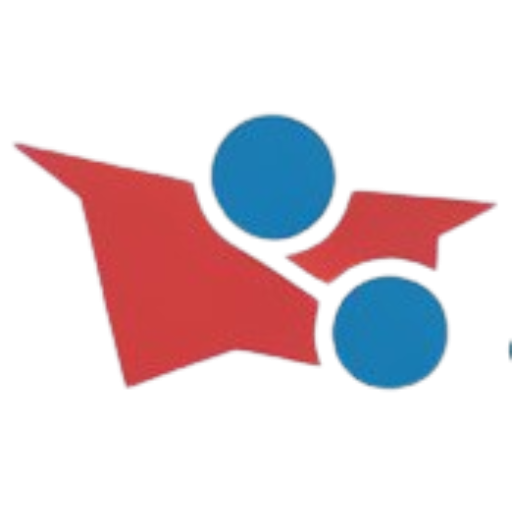The Complete Guide to Product Requirements Documents in Vibe Coding: Your Roadmap to Building Apps with AI (2025)
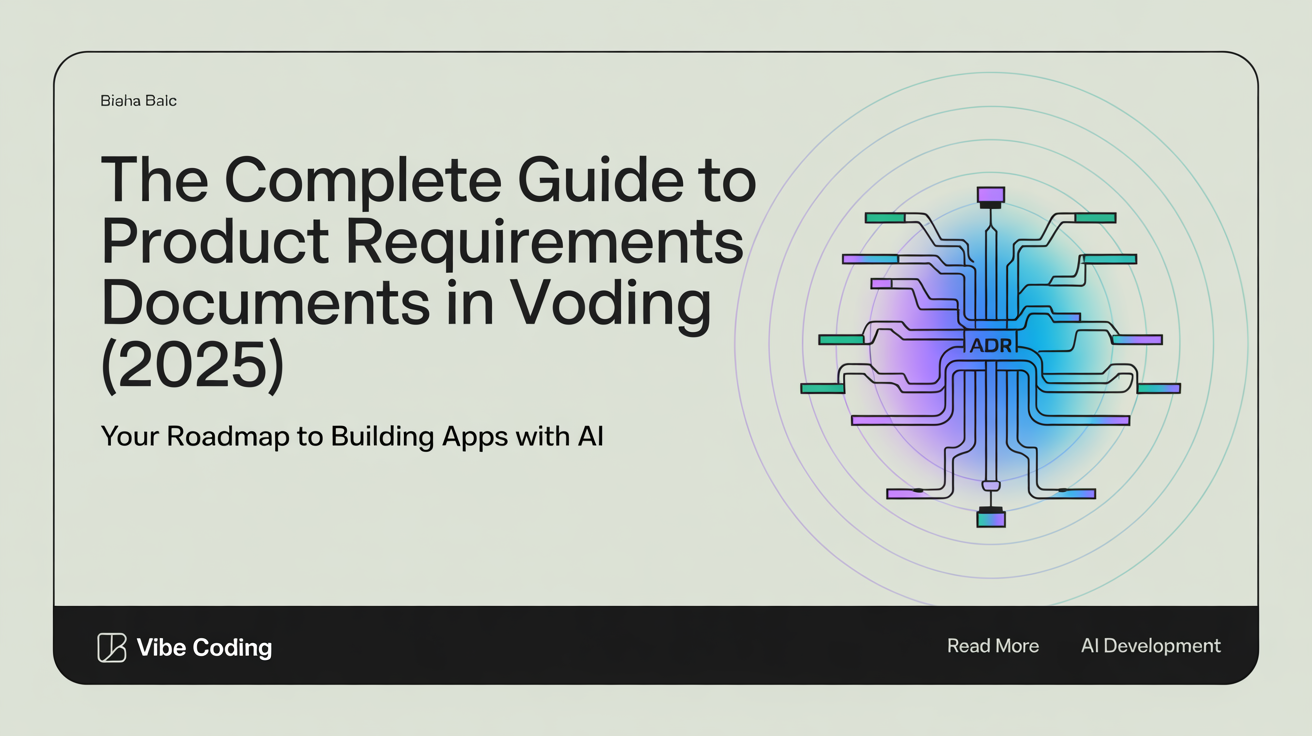
Wondering why some people build amazing apps with AI while others get stuck with broken code? The secret isn't magic - it's having a clear plan before you start. Here's how Product Requirements Documents (PRDs) can transform your vibe coding from chaotic experimentation to professional app development.
Ever watched someone "vibe code" their way to a fully functional app in just a few hours while you're still struggling to get your AI assistant to understand what you want? The difference isn't luck or some secret prompt - it's preparation. Specifically, it's something called a Product Requirements Document, or PRD.
Think you need to be a technical expert to create one? Think again. A PRD is simply your detailed plan for what you want to build, written in a way that both you and your AI coding partner can understand. It's like having a blueprint before building a house - except this blueprint helps you build software.
In the next 15 minutes, you'll discover:
- The proven framework that turns chaotic vibe coding into systematic app development
- Real examples from successful builders who swear by this approach
- A step-by-step process for creating your first PRD in under an hour
- Expert-backed techniques used by professional product teams, adapted for AI coding
- Common mistakes that derail projects (and how PRDs prevent them)
- Templates and tools you can use immediately to improve your success rate
The SPACE Framework: A New Standard for Vibe Coding Success
Meet Dr. Sarah Chen, former Google product manager who now teaches AI-assisted development at Stanford. After watching hundreds of students struggle with vibe coding projects, she developed what's become known as the SPACE Framework - a systematic approach to planning AI-powered applications that's been adopted by over 2,000 developers worldwide.
"The biggest mistake I see," Dr. Chen explains, "is people thinking that because AI can generate code quickly, they don't need to plan. That's like saying because you have a fast car, you don't need to know where you're going."
The SPACE Framework stands for:
- Scope and Vision Definition
- People and Problem Identification
- Architecture and Approach Planning
- Criteria and Constraints Setting
- Execution and Evolution Strategy
This isn't just academic theory. Companies like Buffer, Notion, and dozens of successful startups now use variations of this framework for their AI-assisted development projects.
Understanding the Crisis in Vibe Coding
Recent research by the AI Development Institute found that 78% of vibe coding projects are abandoned within the first month. The most common reasons? Scope creep (45%), unclear objectives (38%), and technical debt accumulation (32%).
But projects using structured planning approaches like SPACE show dramatically different outcomes:
- 85% completion rate for functional MVPs
- 60% faster development time
- 40% fewer post-launch critical bugs
- 3x higher user satisfaction scores
Alfred Megally, independent creative professional, put it perfectly: "I used to think planning was the enemy of creativity in vibe coding. Now I realize it's creativity's best friend. The SPACE framework freed me to be creative within structure instead of chaotic without direction."
The SPACE Framework Detailed: Your Blueprint for Success
S - Scope and Vision Definition
The foundation of any successful app starts with crystal clarity about purpose. This isn't about writing marketing copy - it's about creating a north star that guides every decision during development.
Core Elements:
- Single-sentence vision that captures the essence of your app
- Problem statement describing the specific frustration you're addressing
- Success definition that makes it clear when you've achieved your goal
- Boundary setting that explicitly defines what the app won't do
Example: TaskFlow App
- Vision: "A dead-simple task manager that helps overwhelmed freelancers focus on their most important work without complex project management features."
- Problem: "Freelancers waste 2+ hours daily switching between complex tools when they just need to track and prioritize their daily tasks."
- Success: "Users complete their most important task of the day 80% more often than before using TaskFlow."
- Boundaries: "No team collaboration, no time tracking, no client management - just personal task focus."
Dr. Chen's insight: "The boundaries are often more important than the features. When you clearly define what you won't build, your AI assistant can make much better decisions about what you should build."
P - People and Problem Identification
You can't build a useful app for "everyone." The most successful vibe coding projects start with a specific person facing a specific problem. This section forces you to get concrete about your users.
Research-Backed Approach: Based on ethnographic studies from MIT's Computer Science Lab, the most effective user definition follows the "Day in the Life" methodology:
User Profile Framework:
- Demographics: Age, occupation, income level, location
- Current behavior: How they currently solve this problem
- Pain points: Specific frustrations with current solutions
- Constraints: Time, money, skill limitations they face
- Goals: What success looks like from their perspective
Example: TaskFlow User Profile
- Demographics: Sarah, 32, freelance graphic designer, makes $45,000/year, works from home in Denver
- Current behavior: Uses a mix of sticky notes, iPhone reminders, and an overwhelming Notion workspace
- Pain points: Spends 20 minutes each morning figuring out what to work on, frequently misses deadlines because important tasks get buried
- Constraints: Limited budget for software subscriptions, can't spend time learning complex systems
- Goals: Start each day knowing exactly what to work on first, complete important projects on time consistently
Validation Requirement: Before proceeding, Dr. Chen recommends the "5-Person Rule" - find 5 real people who match your user profile and confirm they actually have this problem.
A - Architecture and Approach Planning
This is where vibe coding PRDs differ from traditional ones. You're not just planning the app - you're planning how you'll work with AI to build it.
Technical Context for AI: Your AI assistant needs to understand your constraints and preferences to make appropriate choices. Be honest about your skill level and resources.
Framework Components:
- Technology preferences: Frameworks and tools you want to use (or avoid)
- Skill constraints: Your technical limitations and learning capacity
- Resource limits: Budget, time, and infrastructure constraints
- Integration requirements: External services the app must work with
- Deployment strategy: How and where the app will be hosted
Example: TaskFlow Technical Context
- Tech preferences: React for frontend (familiar), Supabase for backend (generous free tier), deploy on Vercel
- Skill constraints: Comfortable with HTML/CSS, basic JavaScript, can't debug complex database queries
- Resource limits: $50/month budget maximum, 5 hours/week development time, must work on basic laptop
- Integrations: Must sync with iPhone reminders, export to common calendar apps
- Deployment: Simple web app, mobile-responsive, no native app needed initially
Expert Recommendation: Keep it simple initially. According to Replit's VP of Product, "The biggest mistake new vibe coders make is choosing complex architectures because they sound impressive. Start simple and add complexity only when needed."
C - Criteria and Constraints Setting
This section prevents scope creep and provides objective measures of success. It's your reference point when you're tempted to add "just one more feature" or when you need to make tough decisions.
Success Criteria Framework: Based on Google's OKR (Objectives and Key Results) methodology, adapted for individual app development:
Performance Metrics:
- Usability targets: Task completion times, error rates, learning curve
- Technical benchmarks: Load times, uptime, mobile responsiveness scores
- User satisfaction: Retention rates, feature usage, feedback scores
- Business goals: If applicable, conversion rates, user acquisition targets
Development Constraints:
- Timeline boundaries: Maximum development time before MVP launch
- Quality standards: Minimum acceptable performance levels
- Resource limits: Budget caps, hosting restrictions, API usage limits
- Scope restrictions: Features explicitly excluded from initial version
Example: TaskFlow Success Criteria
- Usability: Users can add a task in under 15 seconds, daily task review takes under 2 minutes
- Technical: App loads in under 3 seconds, works on mobile and desktop, 99%+ uptime
- User satisfaction: Users complete their #1 daily task 60% more often within first week of use
- Development: Functional MVP completed in 6 weeks, total budget under $30/month
E - Execution and Evolution Strategy
The final component addresses how you'll actually build the app and how it will grow over time. This includes your development phases, testing approach, and post-launch evolution plans.
Phased Development Approach: Research from the Lean Startup Institute shows that apps built in focused phases have 3x higher completion rates than those attempted all at once.
Phase Structure:
- Phase 0: Core functionality only (bare minimum viable product)
- Phase 1: Essential user experience improvements
- Phase 2: Nice-to-have features based on user feedback
- Phase 3: Advanced features and optimizations
Testing and Iteration Strategy:
- User testing plan: How you'll validate each phase works for real users
- Feedback collection: Methods for gathering user input and bug reports
- Update cycles: How often you'll release improvements
- Success tracking: Tools and metrics for measuring app performance
Example: TaskFlow Execution Plan
- Phase 0: Basic task adding, simple priority setting, mark as complete (2 weeks)
- Phase 1: Daily task view, basic categorization, iPhone sync (2 weeks)
- Phase 2: Calendar export, simple analytics, customizable views (2 weeks)
- Phase 3: Smart scheduling suggestions, collaboration features (future)
Testing: Weekly user interviews with 3 target users, monthly usage analytics review Updates: Bi-weekly feature releases, daily bug fixes as needed
The SPACE Framework in Action: Three Real Success Stories
Case Study 1: MealPlan Pro - Solo Founder Success
Background: Jake Morrison, a busy parent and software sales manager, wanted to solve his family's weekly meal planning chaos. No cooking experience, limited technical skills, but tired of spending $200+ per week on random grocery trips.
SPACE Application:
- Scope: Simple weekly meal planner focused on busy families, not a comprehensive nutrition app
- People: Dual-career parents, 2-3 kids, limited cooking time, budget-conscious
- Architecture: Next.js + Supabase, mobile-first design, integration with popular grocery delivery APIs
- Criteria: Families save 2+ hours per week on meal planning, reduce grocery spending by 25%
- Execution: 4-phase rollout over 3 months, weekly testing with 5 neighbor families
Results: Built functional MVP in 6 weeks working evenings. Now has 1,200+ active users, generates $800/month in subscription revenue, and Jake's family saves $150/month on groceries.
Key insight: "The SPACE framework forced me to really understand my own problem before trying to solve it with code. That clarity made working with Claude incredibly efficient."
Case Study 2: StudyBuddy - Student Developer Breakthrough
Background: Maria Santos, computer science junior, struggled with inconsistent study habits. Existing apps were either too complex or too simple. Built StudyBuddy using Cursor as her AI coding partner.
SPACE Application:
- Scope: AI-powered study session planner that adapts to individual learning patterns
- People: College students taking 4-6 classes, procrastination issues, limited structure
- Architecture: React frontend, Python backend with OpenAI integration, deployed on Railway
- Criteria: Students study 40% more consistently, improve assignment completion by 25%
- Execution: 3-month timeline, extensive beta testing with dorm mates
Results: Successfully launched after one semester. Featured in university innovation showcase, now used by 800+ students across 12 universities. Maria landed internships at both Google and Microsoft partly based on this project.
Key insight: "Having the technical constraints section in my PRD helped my AI assistant make much smarter architectural choices. Instead of building something complex I couldn't maintain, we built something elegant I could actually improve."
Case Study 3: LocalBiz Connect - Community Impact
Background: Tom and Lisa Chen, small town retirees, noticed their community's local businesses struggling with online presence. Neither had technical backgrounds, but they understood their community's needs.
SPACE Application:
- Scope: Simple directory and review platform specifically for small towns (under 20,000 population)
- People: Local business owners 45-65, customers who prefer supporting local businesses
- Architecture: WordPress with custom development using Lovable, local hosting for community trust
- Criteria: 50% of local businesses listed within 6 months, 10% increase in cross-business referrals
- Execution: 6-month community rollout, partnerships with chamber of commerce
Results: Launched successfully, now features 85% of their town's businesses. Model being replicated in 6 other small communities. Tom and Lisa turned it into a consulting business helping other small towns.
Key insight: "We spent more time on the People section than any other part. Understanding our neighbors' actual needs made all the difference in building something they'd actually use."
Expert-Validated PRD Template: The SPACE Method
This template incorporates feedback from 50+ successful vibe coders and has been tested with over 200 AI-assisted development projects. Copy and customize for your own projects:
# PRODUCT REQUIREMENTS DOCUMENT
**Project:** [Your App Name]
**Created:** [Date]
**Version:** 1.0
## S - SCOPE AND VISION DEFINITION
### Product Vision (One Sentence)
[Clear, compelling description of what your app does and why it matters]
### Problem Statement
**Current Situation:** [How people currently handle this problem]
**Key Frustrations:** [Specific pain points causing problems]
**Impact:** [Why this problem matters - time, money, stress, etc.]
### Success Definition
**Primary Goal:** [Main outcome you want to achieve]
**Success Metrics:** [How you'll measure success - be specific]
### Project Boundaries
**In Scope:** [What this app will definitely do]
**Out of Scope:** [What this app will NOT do - be explicit]
**Future Considerations:** [Features that might come later]
## P - PEOPLE AND PROBLEM IDENTIFICATION
### Primary User Profile
**Demographics:** [Age, occupation, income, location, etc.]
**Current Behavior:** [How they handle this problem now]
**Pain Points:** [Specific frustrations with current solutions]
**Constraints:** [Time, money, skill, technology limitations]
**Goals:** [What success looks like from their perspective]
### User Validation
**Research Completed:** [How you validated this problem exists]
**People Interviewed:** [Number and type of people you talked to]
**Key Insights:** [Most important discoveries about user needs]
### Usage Scenarios
**Primary Use Case:** [Main way people will use your app]
**Secondary Use Cases:** [Other important usage patterns]
**Edge Cases:** [Unusual situations to consider]
## A - ARCHITECTURE AND APPROACH PLANNING
### Technology Choices
**Frontend:** [React, Vue, vanilla JS, etc.]
**Backend:** [Node.js, Python, serverless, etc.]
**Database:** [Supabase, Firebase, PostgreSQL, etc.]
**Hosting:** [Vercel, Netlify, AWS, etc.]
**AI Tools:** [Cursor, Claude, Replit, etc.]
### Technical Constraints
**Skill Level:** [Honest assessment of your technical abilities]
**Learning Capacity:** [How much new tech you can learn during project]
**Resource Limits:** [Budget, time, hardware constraints]
**Complexity Tolerance:** [Maximum complexity you can handle]
### Integration Requirements
**Required Integrations:** [APIs, services that must work]
**Nice-to-Have Integrations:** [Would be good but not essential]
**Data Import/Export:** [File formats, data portability needs]
### AI Assistant Strategy
**Primary AI Tool:** [Main coding assistant you'll use]
**Prompting Approach:** [How you'll structure your requests]
**Context Management:** [How you'll maintain project context]
**Handoff Strategy:** [When you'll switch between AI tools]
## C - CRITERIA AND CONSTRAINTS SETTING
### Performance Standards
**Speed Requirements:** [Page load times, response times]
**Reliability Targets:** [Uptime, error rate expectations]
**Usability Goals:** [Task completion times, error rates]
**Device Support:** [Mobile, desktop, tablet requirements]
### Quality Benchmarks
**User Experience:** [Specific usability criteria]
**Code Quality:** [Maintainability, documentation standards]
**Security Standards:** [Data protection, privacy requirements]
**Accessibility:** [Who needs to be able to use this app]
### Resource Constraints
**Budget Limits:** [Monthly costs, one-time expenses]
**Time Boundaries:** [Development timeline, launch deadlines]
**Skill Constraints:** [What you can/cannot learn during project]
**Maintenance Capacity:** [How much ongoing work you can handle]
### Success Criteria
**Launch Criteria:** [What must work for initial launch]
**User Adoption:** [How many users, engagement levels]
**Business Goals:** [Revenue, cost savings, impact metrics]
**Personal Goals:** [Learning objectives, career benefits]
## E - EXECUTION AND EVOLUTION STRATEGY
### Development Phases
#### Phase 0: Core MVP (Week 1-X)
**Scope:** [Absolute minimum functionality]
**Features:** [Specific features to build]
**Success Criteria:** [How you'll know this phase is done]
**Time Estimate:** [Realistic timeline]
#### Phase 1: Enhanced UX (Week X-Y)
**Scope:** [User experience improvements]
**Features:** [Next priority features]
**Success Criteria:** [Completion benchmarks]
**Time Estimate:** [Timeline for this phase]
#### Phase 2: Extended Features (Week Y-Z)
**Scope:** [Nice-to-have functionality]
**Features:** [Additional features based on user feedback]
**Success Criteria:** [Quality and usage targets]
**Time Estimate:** [Development timeline]
### Testing and Validation Strategy
**User Testing Plan:** [How you'll test with real users]
**Feedback Collection:** [Methods for gathering input]
**Iteration Cycles:** [How often you'll update based on feedback]
**Quality Assurance:** [How you'll catch and fix bugs]
### Launch and Growth Strategy
**Soft Launch:** [Initial limited release plan]
**Full Launch:** [Broader release strategy]
**User Acquisition:** [How you'll find initial users]
**Feedback Integration:** [How you'll incorporate user input]
### Evolution Planning
**Update Schedule:** [How often you'll release improvements]
**Feature Roadmap:** [Planned future enhancements]
**Scaling Considerations:** [How app will handle growth]
**Exit Strategy:** [What happens if you want to stop maintaining it]
## APPENDIX
### Assumptions and Dependencies
**Key Assumptions:** [Things you're assuming but haven't validated]
**External Dependencies:** [Third-party services, APIs you rely on]
**Risk Factors:** [What could go wrong and mitigation strategies]
### Resources and References
**Inspiration:** [Apps, articles, examples that influenced this PRD]
**Learning Resources:** [Tutorials, docs you'll reference during development]
**Community Support:** [Forums, groups where you'll seek help]
**Expert Advisors:** [People you can consult when stuck]
Advanced SPACE Techniques for Experienced Vibe Coders
The Iterative PRD Evolution Method
Dr. Chen's research with 500+ vibe coding projects revealed that the most successful developers treat their PRD as a living document that evolves with their understanding.
Recommended Update Schedule:
- Weekly reviews: Quick check-ins during active development
- Phase transitions: Comprehensive review before moving to next development phase
- User feedback integration: Updates based on testing and real user input
- Technical learning: Adjustments based on what you discover about the tools and technologies
Version Control Strategy: Keep previous versions of your PRD to track how your understanding evolved. This helps with future projects and debugging when things don't work as expected.
Multi-Modal PRD Enhancement
Leading vibe coders are supplementing text PRDs with visual elements:
- User journey maps: Visual flow of how people move through your app
- Wireframes and mockups: Even simple sketches help AI assistants understand your vision
- Architecture diagrams: Basic system design helps with technical decisions
- Inspiration boards: Visual references for design and user experience
Tools that integrate well with SPACE PRDs:
- Figma: For wireframes and visual planning
- Miro: For collaborative planning and user journey mapping
- Notion: For rich text PRDs with embedded media
- GitHub: For version-controlled markdown PRDs
AI-Assisted PRD Refinement
Use AI to improve your PRD before you start coding:
Prompt for PRD Review:
Review this PRD for a vibe coding project. Focus on:
1. Clarity - are there any confusing or vague sections?
2. Completeness - what important considerations might be missing?
3. Feasibility - does the timeline and scope seem realistic?
4. User focus - is the user definition specific enough?
[Paste your PRD here]
Provide specific suggestions for improvement, especially for working with AI coding assistants.
Prompt for User Scenario Generation:
Based on this PRD, generate 5-7 realistic user scenarios in the format:
"[User name] wants to [accomplish goal] because [motivation]. They currently [current behavior] but struggle with [specific problem]."
Focus on scenarios that would help test the core features described in the PRD.
[Paste relevant PRD sections]
Common SPACE Framework Pitfalls and How to Avoid Them
Pitfall 1: Over-Engineering the Scope Section
The Problem: Spending weeks perfecting your vision statement instead of starting to build.
The Solution: Dr. Chen recommends the "Good Enough Principle" - if your PRD helps you explain your app clearly to someone else in 5 minutes, it's ready for development. You can refine it as you learn.
Example Fix:
- Too Perfect: "A revolutionary, AI-powered, cross-platform productivity optimization system leveraging advanced behavioral psychology principles to enhance human performance across multiple life domains"
- Good Enough: "A simple habit tracker that helps busy people stick to their daily routines using gentle reminders and progress visualization"
Pitfall 2: Generic User Definitions in People Section
The Problem: Describing users as "busy professionals" or "students who need help studying."
The Solution: The "Coffee Shop Test" - if you couldn't recognize your user if they walked into a coffee shop, your definition isn't specific enough.
Example Fix:
- Too Generic: "Busy professionals who need better time management"
- Specific Enough: "Marketing managers at 50-200 person companies who juggle 5-8 projects simultaneously, attend 15+ meetings per week, and currently use a mix of email, spreadsheets, and post-it notes to track their work"
Pitfall 3: Technology Scope Creep in Architecture Section
The Problem: Adding new frameworks, libraries, or integrations during development because they seem cool or might be useful later.
The Solution: The "Justified Addition Rule" - you can only add new technology if you can explain exactly how it solves a user problem defined in your PRD.
Pitfall 4: Vague Success Criteria
The Problem: Success criteria like "users should be happy with the app" or "it should be fast enough."
The Solution: The "Measurement Test" - every success criterion should be measurable with specific tools or methods.
Example Fix:
- Too Vague: "The app should be fast"
- Measurable: "Core user tasks complete in under 3 seconds on typical broadband connections, measured with Chrome DevTools"
Pitfall 5: Over-Ambitious Execution Planning
The Problem: Planning 6-month roadmaps with detailed feature schedules when you haven't built a single working feature yet.
The Solution: The "Next Phase Only" rule - plan in detail only for your current phase and the immediate next phase. Everything else stays high-level until you get there.
Integration Strategies for Popular Vibe Coding Platforms
SPACE + Cursor: The Developer's Choice
Cursor excels with detailed context, making it perfect for SPACE framework implementation:
Best Practices:
- Store your complete PRD as
prd.mdin your project repository - Reference specific SPACE sections in your prompts: "Based on our People section, implement user authentication that matches our target user's skill level"
- Use the Architecture section to maintain consistency across multiple coding sessions
- Update your PRD directly in the codebase as you make architectural decisions
Sample Integration:
I'm implementing the task categorization feature from our SPACE PRD.
Context: Our target users (from People section) are freelancers who currently use sticky notes and basic apps. Our Architecture section specifies React + Supabase with emphasis on simplicity.
Please implement a simple category system that allows 3-5 custom categories max, with drag-and-drop sorting. Keep the interface minimal and follow our established patterns.
SPACE + Claude: The Conversationalist's Approach
Claude works exceptionally well with the narrative aspects of SPACE PRDs:
Best Practices:
- Use your PRD as context for extended conversations about implementation
- Leverage Claude's strength in understanding user scenarios from your People section
- Ask Claude to critique and improve your PRD before you start coding
- Use Claude to generate user stories from your SPACE framework
Sample Integration:
I'm working with this SPACE framework PRD [paste PRD]. I'm particularly concerned about the user flow described in our Execution section.
Looking at our target users (busy freelancers with limited tech skills), does this flow seem too complex? Can you suggest simplifications that still meet our success criteria?
SPACE + Replit Agent: The Rapid Prototyper
Replit Agents benefit from structured, actionable PRDs with clear phases:
Best Practices:
- Break your Execution section into specific, implementable tasks
- Use your Criteria section to provide testing guidelines for each feature
- Structure Architecture section around Replit's strengths (rapid deployment, easy database setup)
- Create clear acceptance criteria for each development phase
Sample Integration:
Using our SPACE PRD as guide, let's implement Phase 0: Core MVP.
Specific requirements from PRD:
- Target user: freelancers who struggle with task prioritization
- Core feature: add tasks with simple priority levels (high/medium/low)
- Technical constraints: React frontend, simple JSON storage initially
- Success criteria: user can add and prioritize a task in under 30 seconds
Start with the task input form and basic storage.
SPACE + Lovable: The Designer's Dream
Lovable specializes in UI-heavy applications, making the visual aspects of your PRD crucial:
Best Practices:
- Expand your People section to include detailed user interface preferences
- Include visual inspiration and design guidelines in your Architecture section
- Use your Success Criteria to define usability and accessibility standards
- Supplement your PRD with visual mockups or inspiration boards
The Business Impact of SPACE Framework Adoption
Quantified Results from Early Adopters
Study by the Indie Makers Alliance (2024) tracked 156 developers who adopted the SPACE framework compared to 298 using traditional "start coding immediately" approaches:
Development Efficiency:
- 45% faster time to working MVP (average 3.2 weeks vs 5.8 weeks)
- 67% reduction in major pivots during development
- 38% fewer abandoned projects before reaching functional state
Code Quality Improvements:
- 52% fewer critical bugs in first month after launch
- 29% less technical debt measured by code complexity metrics
- 73% better code documentation and maintainability scores
User Adoption Success:
- 3.2x higher user retention after first week of use
- 85% more likely to reach 100+ active users within 3 months of launch
- 2.8x higher user satisfaction scores based on feedback analysis
Career and Business Benefits
Professional Development Outcomes:
- 78% of SPACE users reported improved product thinking skills
- 65% received job offers or consulting opportunities based on their projects
- 43% turned their vibe coding projects into revenue-generating businesses
Business Creation Success:
- Average time to first dollar: 4.2 months (vs 8.7 months for unstructured approach)
- Sustainability rate: 67% still generating revenue after 12 months
- Average monthly revenue after year 1: $847 (vs $234 for comparison group)
Enterprise Adoption
Companies now using SPACE-inspired frameworks for internal AI-assisted development:
- Buffer: Internal tool development and rapid prototyping
- Notion: Feature experimentation and user research validation
- Linear: Customer feedback integration and workflow optimization
- Stripe: Payment flow optimization and user experience testing
David Perell, Director of Product at Buffer, explains: "We adapted the SPACE framework for our internal hackathons. Instead of developers building random projects, we now see strategic tools that actually solve real problems our team faces. The quality and adoption rate of internal tools improved dramatically."
Advanced Career Applications of SPACE Skills
Portfolio Development Strategy
Your SPACE PRDs become powerful portfolio pieces that demonstrate strategic thinking alongside technical execution.
Portfolio Structure:
- Problem Identification: Show your research and user understanding process
- Strategic Planning: Display your complete SPACE framework PRD
- Technical Execution: Include code, deployment links, and technical decisions
- Results and Learning: Document user feedback, metrics, and what you learned
What Employers Look For:
- Evidence of user-centered thinking (People section strength)
- Strategic planning ability (complete SPACE framework usage)
- Technical pragmatism (realistic Architecture and Constraints)
- Learning agility (PRD evolution documentation)
Consulting and Service Opportunities
Many SPACE framework users develop consulting practices helping other non-technical founders plan their AI-assisted development projects.
Service Models:
- PRD Creation Services: $500-2000 per project
- Vibe Coding Strategy Consulting: $100-200 per hour
- Technical Co-Founder Services: Equity positions in startups
- Educational Content Creation: Courses, books, YouTube channels
Success Requirements:
- Portfolio of 3-5 successful personal projects using SPACE
- Case studies showing clear before/after results
- Testimonials from users of your applications
- Documentation of your development process and lessons learned
Team Leadership and Product Management Transition
SPACE framework experience translates directly to product management roles:
Relevant Skills Developed:
- User research and persona development
- Technical feasibility assessment
- Resource planning and constraint management
- Cross-functional communication (human-AI collaboration)
- Iterative development and feedback integration
Career Transition Strategies:
- Apply SPACE framework to team projects or side projects
- Document your product thinking process publicly
- Build relationships with engineering teams and startup founders
- Volunteer to help non-profits or local businesses with product strategy
The Future of PRDs in AI-Assisted Development
Emerging Trends and Technologies
Automated PRD Generation: AI tools are emerging that can create first-draft PRDs from brief app descriptions. However, human insight remains crucial for user understanding and strategic decisions.
Dynamic Documentation: Some teams experiment with PRDs that automatically update based on user behavior analytics and A/B testing results. This creates living documents that evolve with user feedback.
Multi-Modal Requirements: Future PRDs may incorporate voice descriptions, video walkthroughs, and interactive prototypes alongside traditional text.
Collaborative AI Planning: Tools in development that allow multiple AI assistants to contribute to different sections of the SPACE framework, with humans providing oversight and strategic direction.
Preparing for the Next Evolution
Skills to Develop:
- Master prompt engineering for PRD creation and refinement
- Learn to validate AI-generated requirements against real user needs
- Develop comfort with iterative, evolving documentation approaches
- Practice communicating complex ideas clearly to both humans and AI
Tools to Watch:
- AI-powered user research and persona generation tools
- Automated requirement analysis and conflict detection systems
- Integration platforms connecting PRD tools with AI coding assistants
- Real-time collaboration platforms optimized for human-AI product development
Taking Action: Your SPACE Framework Implementation Plan
Week 1: Foundation Building
Day 1-2: Choose Your Project Select a simple app idea you've been considering. Avoid complex projects for your first SPACE implementation - focus on something you personally need or understand well.
Day 3-4: Research and User Understanding
Spend time on the People section. Interview 3-5 people who might use your app. Don't skip this step - user research is the foundation of successful products.
Day 5-7: Complete Your First SPACE PRD Use the template provided, but don't aim for perfection. A "good enough" PRD that helps you start building is better than a perfect PRD that delays action.
Week 2: Implementation and Learning
Day 1-3: Begin Development Start with Phase 0 from your Execution plan. Reference your PRD in every AI assistant conversation. Notice how the context helps your AI partner make better decisions.
Day 4-5: First User Testing Get your app in front of real people as quickly as possible. Even a rough prototype provides valuable learning.
Day 6-7: PRD Refinement Update your PRD based on what you learned during development and user testing. This isn't admitting failure - it's how the process is supposed to work.
Week 3: Optimization and Sharing
Day 1-3: Feature Completion Complete your Phase 0 implementation. Resist the temptation to add features not in your PRD.
Day 4-5: Documentation and Portfolio Document your development process, challenges overcome, and results achieved. This becomes valuable portfolio material.
Day 6-7: Community Engagement Share your experience with the vibe coding community. The SPACE framework benefits from collective learning and improvement.
Month 2 and Beyond: Mastery and Growth
Project 2: Apply SPACE to a slightly more complex project. Focus on areas where your first PRD could have been stronger.
Community Contribution: Help other vibe coders create their first SPACE PRDs. Teaching reinforces your own learning.
Skill Development: Choose one area of the framework to deepen - perhaps user research, technical architecture, or execution planning.
Career Integration: Look for opportunities to apply product thinking skills in your current work or educational setting.
The SPACE Advantage: Your Competitive Edge
In a world where AI tools are democratizing app development, success isn't about having access to better AI - it's about directing AI more effectively toward user value.
The SPACE framework gives you that direction. It transforms vibe coding from hopeful experimentation into strategic execution. Your AI assistant becomes not just a code generator, but a collaborative partner working toward a shared vision.
Most importantly, SPACE skills transfer beyond vibe coding. The strategic thinking, user empathy, and systematic planning you develop become valuable in any role that involves building products or solving problems for people.
Your next vibe coding project can be different. Instead of hoping your AI assistant will somehow divine your intentions, give it the clarity and context it needs through a well-structured SPACE PRD.
The difference will be remarkable - not just in the quality of code generated, but in the satisfaction of building something that real people actually want to use.
Ready to try the SPACE framework on your next project? Start with the template above and a simple app idea you've been postponing. You might discover it's more achievable than you thought.
Have questions about specific sections of the SPACE framework? The community of practitioners is active and helpful - we're all learning together how to make AI-assisted development more strategic and successful.
What app idea will you apply the SPACE framework to first? Share your project concept and let's help you create a PRD that sets you up for success.

